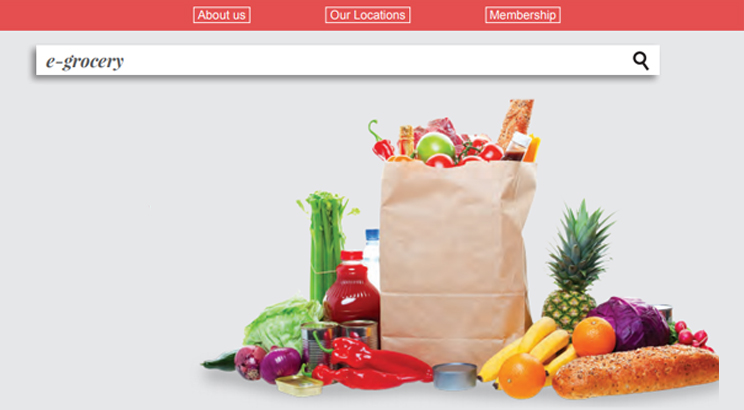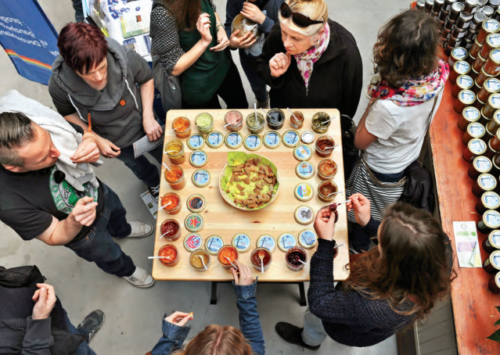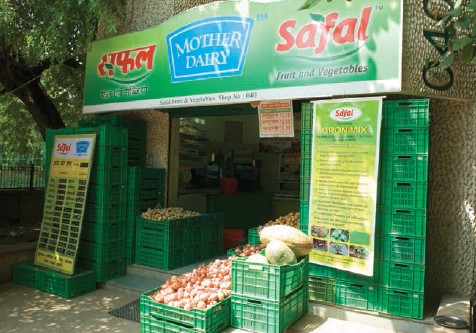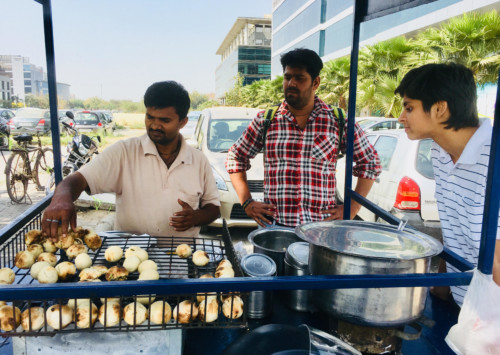Order your Groceries Online in India
Biz@India
October 2018

The Indian food retail market is not only growing rapidly, it is also changing its shape, form and reach, as digital players begin to disrupt the market and global heavyweights enter the race.
Getting groceries, including fresh vegetables, fruits and meat, was one of the biggest headaches for Aarti Das, a newlymarried 26-year-old public relations professional, living in the western Indian city, Mumbai’s plush Worli Sea Face. Even though her work place is barely six kilometres from her home, Aarti never manages to get back home in time to do the weekly shopping and on the rare Sundays that she is at home, she does not have the courage to drive to the market to pick up the essentials. Getting her husband to do the shopping is a bigger challenge, so Aarti depends on her maid to do the shopping, but is never sure of the choice, quality and quantity of goods bought.
Thus, three months ago, when she discovered that her favourite shopping place, the global e-commerce giant, Amazon, begun offering groceries, she was enthralled. “Amazon is really amazing. I trust the products and they deliver fast. I have been using it for practically all my shopping, except groceries, for over two years. So when I learnt that they had begun selling groceries as well, it was a heaven-sent gift for me. Now, I can place my order while driving to work and delivery happens in the evening, even after 8:00 pm, when I return from work,” says Aarti.
Aarti adds that Amazon has helped her as she herself gets to choose the items and the fresh goods – vegetables or fruits – delivered are always of a high quality and neither too raw nor too ripe. In addition to that she keeps track of any new products that she may want to try, for which she could not have used her maid. Across the breadth of the nation, in eastern West Bengal’s Barrackpore, near the state’s capital, Kolkata, live Aarti’s parents, a middle-aged couple of college teachers. Their shopping habits are at the other end of the spectrum.
The Das couple prefers to go to the small vegetable market at the corner of the street where they live. Here, they buy fresh vegetables and fruits twice or thrice a week and also prefer to touch and feel the fresh fish or meat that they consume at least four times a week. “You have to go to the shop and select for yourself whatever you want to eat. When you order anything either online or even on the telephone, as some of our neighbours do, you cannot be sure that you have received the best of the lot as the shopkeeper has no reason to choose you over another customer for whom he is also delivering,” says Abhijit Das, Aarti’s father who teaches English literature to undergraduate students.
Paradoxically, both, the daughter and the parents are fairly representative of an Indian consumer. The young professionals, who are overworked and live in highly congested metros, have literally no spare time for anything else other than sleeping and eating and are thus quickly adapting to all kinds of technology-backed services, from buying their air tickets, booking local cabs, booking cinema tickets or even ordering a meal from the neighbourhood restaurant.
A growing appetite
For this segment of the population, online grocery is a boon and it is to target this segment that India has seen a rapid transformation of the retail business in the last decade and in food retail over the last five years or so. Over a decade ago, with the arrival of first serious players in the Indian e-commerce market, Flipkart and Snapdeal, people’s buying habits, at least in the major cities and towns, began to change. Not only did the e-commerce websites offered the comfort of shopping from home, but also came with several advantages – a collection of wide variety of goods and items in one e-market, saving a lot of time that someone would have to spend in going to different markets for the purchases. Add to that the discomfort and the cost of travelling to the markets.
However, the biggest advantage lay in price. As the new entrants tried to take a slice of market away from the well-entrenched brick and mortar, they offered steep discounts and goods online that often cost up to 40-50 pc lesser than in a market. Added to the discounted price were the costs of storage and delivery, combined with issues such as returns – at no cost to the buyer – as well as failed deliveries, leading to multiple visits to the same house by a delivery team.
All these additional costs were clearly extremely attractive for the consumers but they left the entire e-commerce market bleeding heavily. Even 10 years after they started, none of the e-commerce companies in India are anywhere close to breaking even having already burnt through billions of euros of cash in the past decade.
This, besides the entry of global behemoth Amazon into the Indian market is the main reason behind the collapse last year of Snapdeal, the second largest incumbent. A few years after the launch of Flipkart a handful of players came on the scene in the grocery business, once again lured by the large size of the market. Weighing in at EUR 168 billion in 2016 the Indian food and grocery market is the sixth largest in the world. It is growing rapidly and is expected to be worth EUR 468 billion in 2020. Numerous online food delivery companies plunged headlong into the market, with players like FoodPanda, Zomato, TinyOwl and Swiggy building scale through partnerships.



















